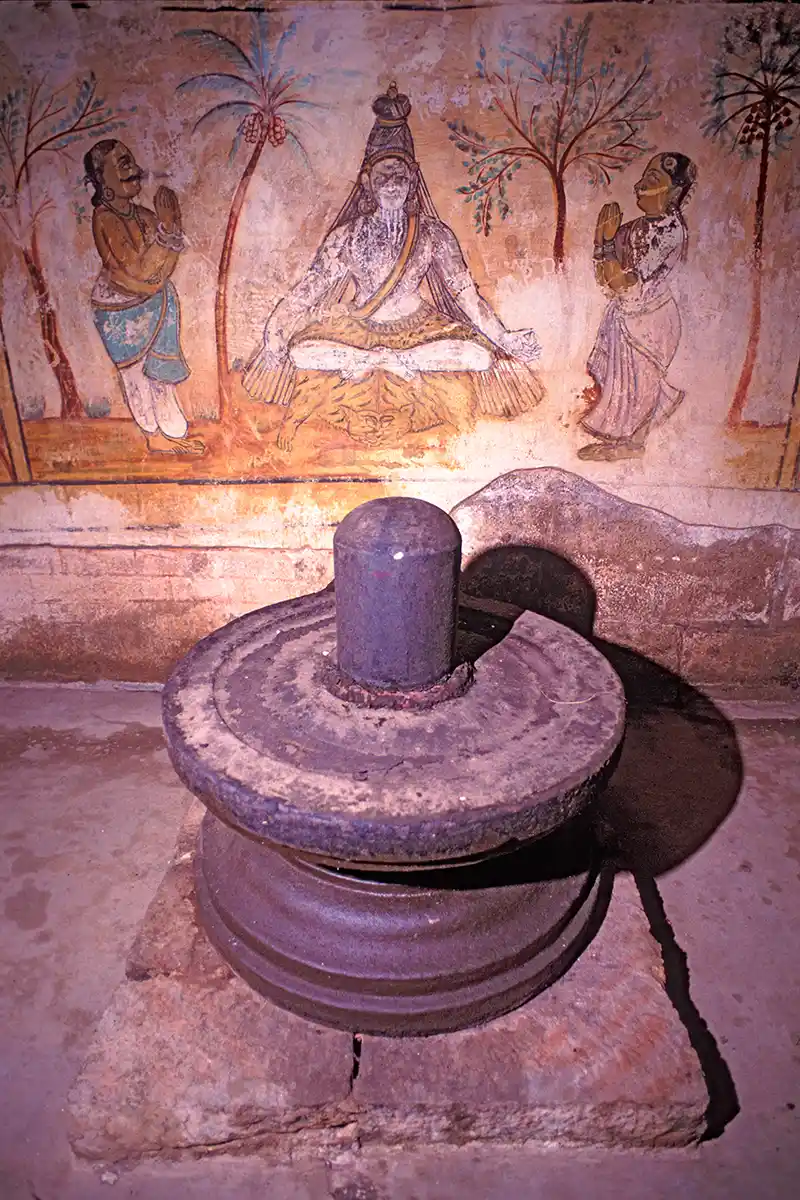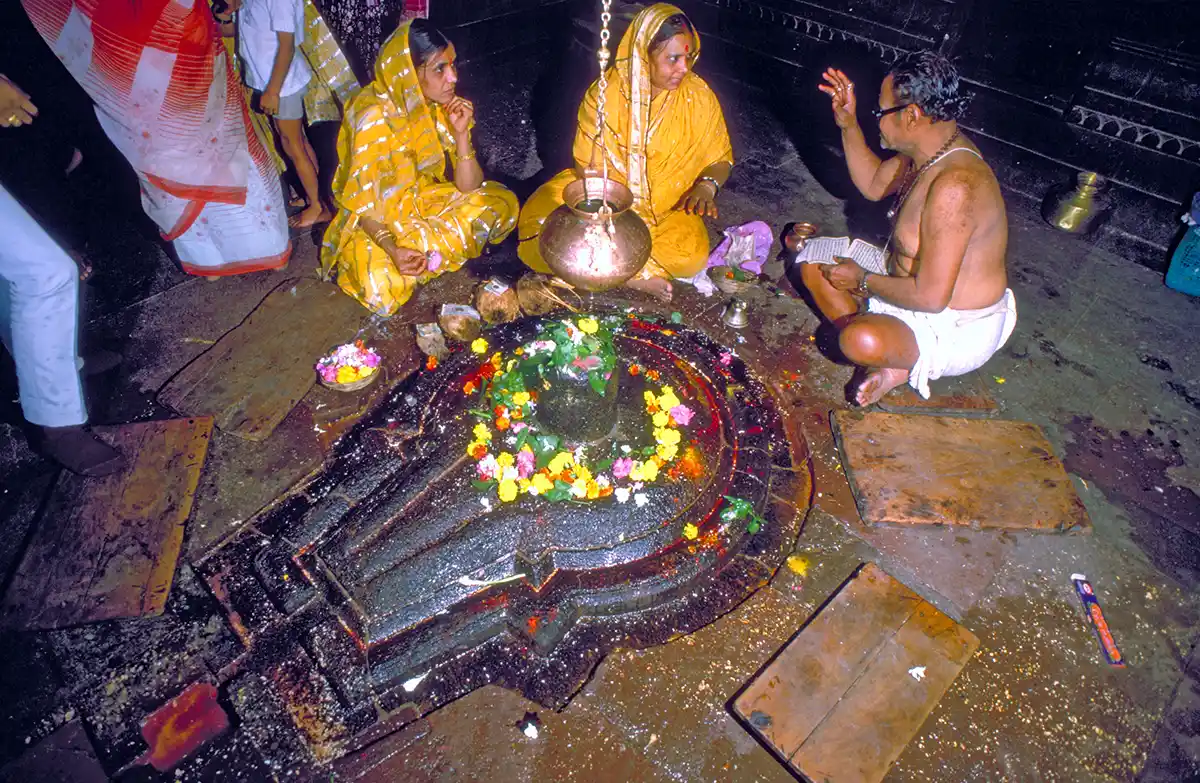Jyotir Linga Shiva Temples
Of the three gods of the Hindu trinity, Shiva is the most commonly worshipped in India today, Vishnu being the second, and Brahma the third. The origins of Shiva are found in a pre-Aryan fertility god and a fierce deity of the Vedas called Rudra. Shiva is a god of many and often contrasting characteristics. He is associated with the creative energy of the universe and, at the same time, with its destruction. His name means 'One in whom the universe sleeps after the destruction and before the next cycle of creation.' It is said that all that is created must one day disintegrate; this disintegration is a return to the formless void from which creation may once again spring forth. Shiva is the dynamic power behind this endless birth, death, and rebirth cycle.
He is the master of Tantric yoga, an esoteric science of sexuality, and also the Lord of ascetics, renunciates, and yogis. He is the god of the battlefield, the cremation grounds, and the inauspicious crossroads. Demons, ghosts, and evil spirits are believed to sometimes accompany him. Frequently a frightening deity, Shiva is also the exponent of the arts and the creator of dance.
Shiva may be worshipped in his anthropomorphic form, as a statue of a man, or more commonly in his aniconic form, the linga. The word linga means sign or mark, and it is understood to be a symbolic representation of Shiva's creative and destructive energies. In some temples, the Linga is simply an un-sculpted outcropping of stone two to three feet tall; in others, a similarly sized round pillar has been made and installed. These pillars will usually have two defined parts: a circular horizontal base called a yoni or a pitha, which is the female component, and the vertical stone shaft signifying the Shiva component (there may also be a square base signifying Brahma and an octagonal one signifying Vishnu). Sometimes, the face of Shiva may be carved or painted upon the linga, or there may be a serpent, a common symbol of Shiva.
Contrary to the common, though inaccurate, notion held in the West, Hindus do not worship the Shiva Lingam as a phallic image. Prudish Christian missionaries made this mistaken claim in the 18th century. The real explanation for linga worship resembles standing stones and sacred mountains worldwide. These objects are understood to be the sources or dwelling places of the spirits of the earth.
Shiva temples are abundant throughout India's many thousands of cities and villages, yet only a small number of these are pilgrimage places. This distinction arises from the fact that, while any structure may house an idol of Shiva and thereby be used in the worship of the deity, true pilgrimage shrines are where Shiva has manifested some aspect of his divine nature. Hindu texts delineate three distinct categories of Shiva shrines: the Jyotir Lingas, the Bhuta Lingas, and the Swayambhu Lingas. The Jyotir Lingas, twelve in number and located throughout the country, are considered the most important. They are:
- Grineshwar in Visalakam, near the Ellora caves, Maharashtra
- Somnath in Saurashtra, Gujarat
- Mahakalaswar at Ujjain, Madhya Pradesh
- Amareswara at Omkareshwar on the river Narmada, Madhya Pradesh
- Tryambakesvara near Nasik on the river Godvari, Maharashtra
- Naganath, in Daruka Vanam, Maharashtra
- Vaidyanath at Deogarh, Bihar
- Bhimasankar northwest of Poona, in Dhakini, Maharashtra, (sometimes alternately listed as a shrine near Gauhati, Assam)
- Kedarnath in the Utterkhand Himalaya, Uttar Pradesh
- Viswanath at Banaras/Varanasi, Uttar Pradesh
- Malikarjuna at Srisailam, Andhra Pradesh state, (also a Shakti Pitha site)
- Rameshvaram, Tamil Nadu
The five Bhuta Lingas are places where Shiva is said to have manifested himself as a Linga of a natural element.
- Chidambaram: Ether
- Sri Kalahasti: Wind
- Tiruvanaikka/Jambunath: Water
- Kanchipuram: Earth
- Tiruvanamalai: Fire
The Swayambhu Linga temples contain representations of Shiva that are believed to have risen by themselves in the primordial past. In the commentary by Nigamajnanadeva on his Jirnoddharadasakam, sixty-eight Swayambhu Lingas are listed along with commentary. For further information and a listing of these sites, consult Gopinatha Rao in the bibliography.
For additional information:

Martin Gray is a cultural anthropologist, writer and photographer specializing in the study of pilgrimage traditions and sacred sites around the world. During a 40 year period he has visited more than 2000 pilgrimage places in 160 countries. The World Pilgrimage Guide at sacredsites.com is the most comprehensive source of information on this subject.


